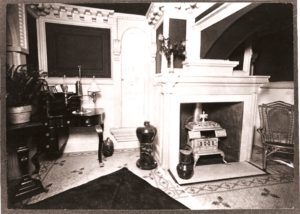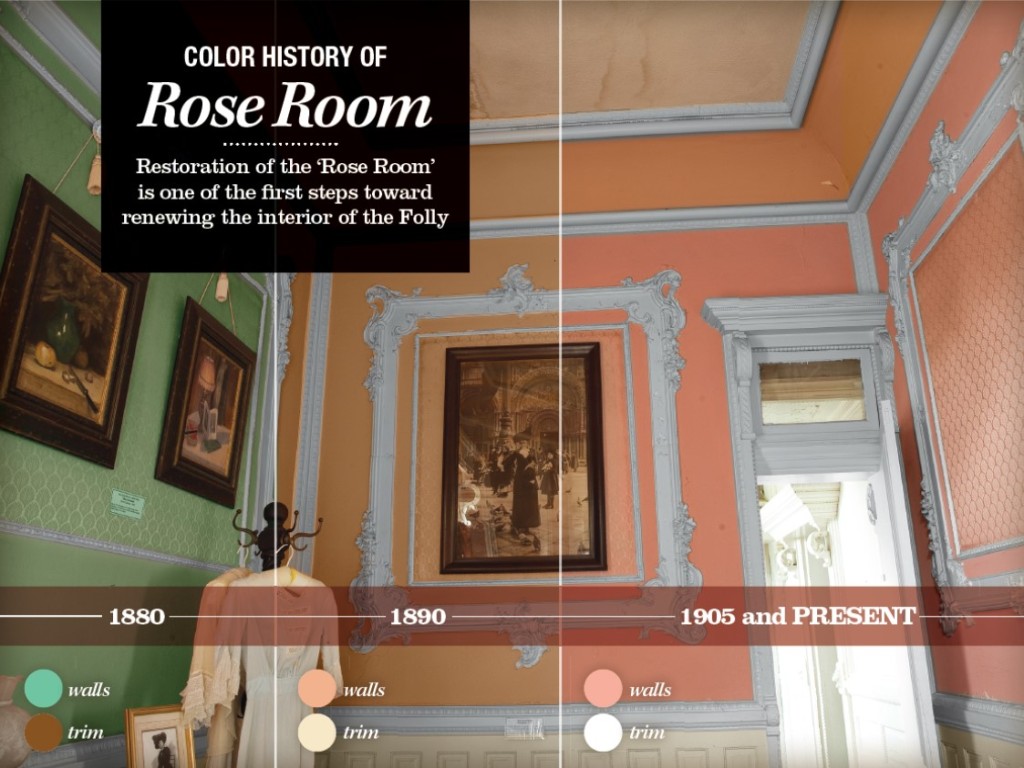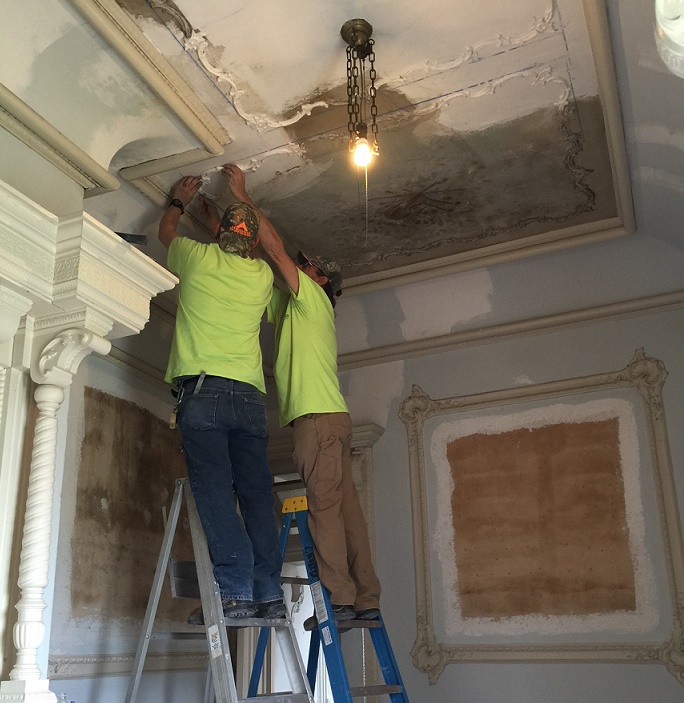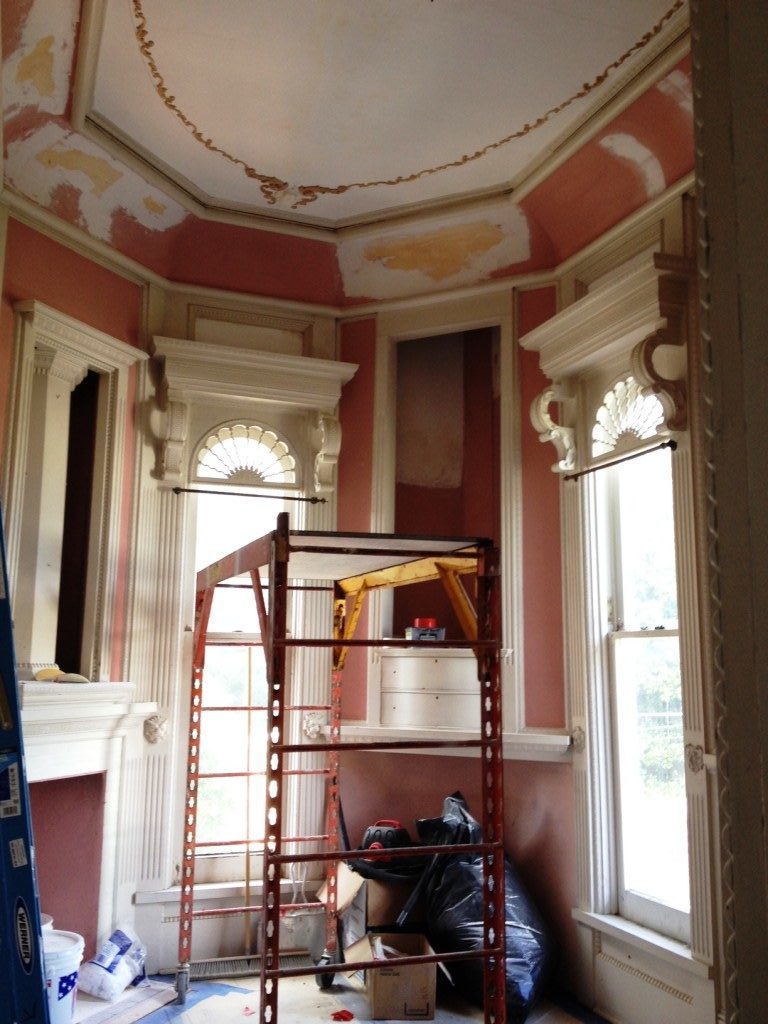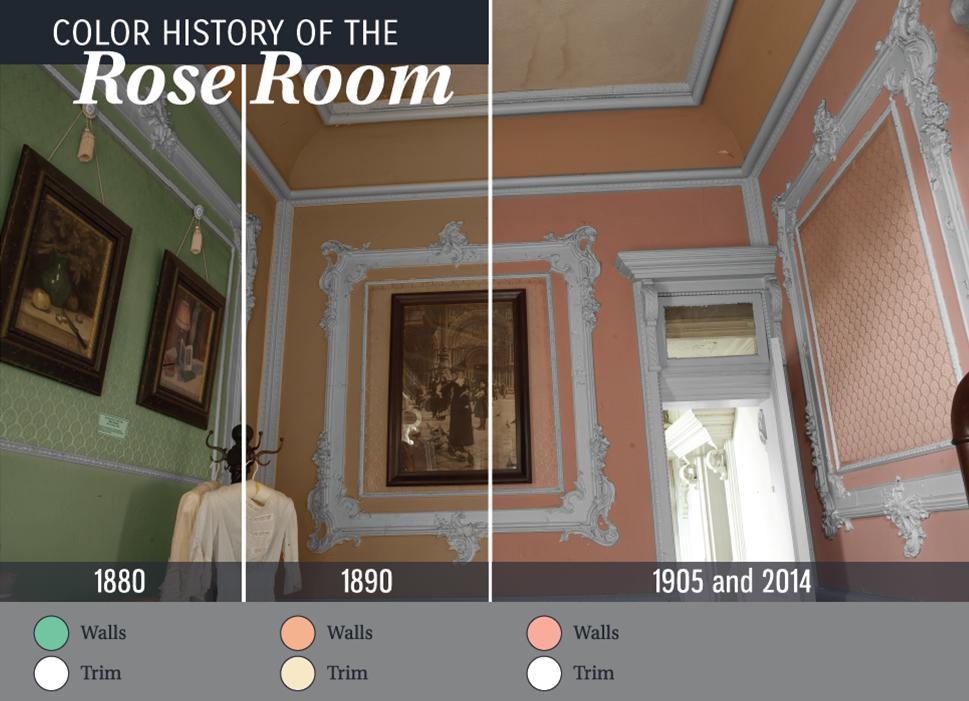Historic Körner’s Folly is pleased to announce that in addition to continuing the Master Bedroom and North Entry & Staircase restoration projects, work will also begin on the Breakfast Room in early 2020. The restoration in these rooms will include removing modern elements added over time, replicating and repairing missing or damaged woodwork and tile, refinishing and cleaning the architectural surfaces, and returning the rooms to their original color schemes. The interior restoration work focuses on restoring and preserving Jule Körner’s original interior décor for the education and enjoyment of the public.

The Breakfast Room, before restoration
After he closed the carriageway closed in 1886, Jule added the Breakfast Room, which became his wife, Polly Alice’s, favorite room. The glass skylights are said to be among the first in North Carolina, and the ample sunlight from the windows allowed Polly Alice to fill the room with plants.
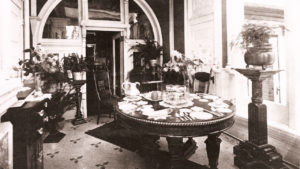
The Breakfast Room, circa 1906
While not initially a part of the 2020 restoration plan, due to extreme leaks from the skylight, the Breakfast Room moved up the restoration priority list. Körner’s Folly will begin work on January 15th, which will include reinforcement of the skylights, repairs to the cracked plaster walls, and recreating the original paint color. While it’s hard to imagine with its current white walls, the Breakfast Room was originally painted a dark olive color, specifically selected to match the floor tiles. The return to olive green walls will be a dramatic change!

Furthermore, work will continue on both the Master Bedroom and North Staircase. The structural work, which included carpentry and plaster work, began before the holiday season. Now, the dramatic interior changes will commence, by recreating historically appropriate paint schemes; removing and relocating modern elements; refinishing and cleaning the floors; and reproducing new drapes, curtains, and bedcoverings. Jule and Polly Alice Körner’s Master Bedroom is getting a whole new makeover, being returned to its blush pink and pale gold color scheme.

The North Staircase, before restoration
Just off the first floor Master Bedroom is the North Entrance and stairway. Rising four floors, or over 40 feet, this is an ambitious project. This main staircase is where the Körner’s greeted guests from 1880-1920, and where guests enter Körner’s Folly for programs and special events today; so it has seen a lot of wear and tear over the years. The walls and ceilings of the North Entry and Staircase will be restored to a robin’s egg blue and off-white color scheme with intricate plaster barley twist running up the entire height of the staircase.
Don’t fear – the Folly will remain OPEN while these rooms undergo restoration. Visitors will have a unique opportunity to see historic preservation in action, so be sure to ask staff about the restoration process while on tour. Tour routes may be altered slightly to accommodate the work, and at times, 1-2 rooms may periodically close, call ahead for information on closings (336) 996-7922.
Körner’s Folly is open for self-guided tours Wednesdays-Saturdays 10 a.m. – 4 p.m. and on Sundays 1 – 4 p.m. The last tickets are sold at 3 p.m. to allow visitors adequate time to explore and enjoy the museum. Private guided group tours are available by appointment.




